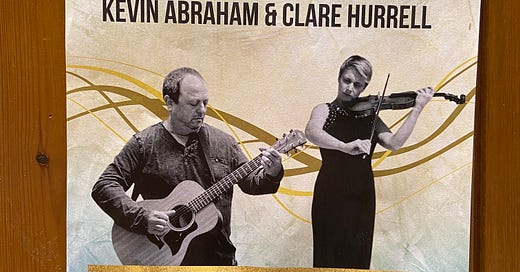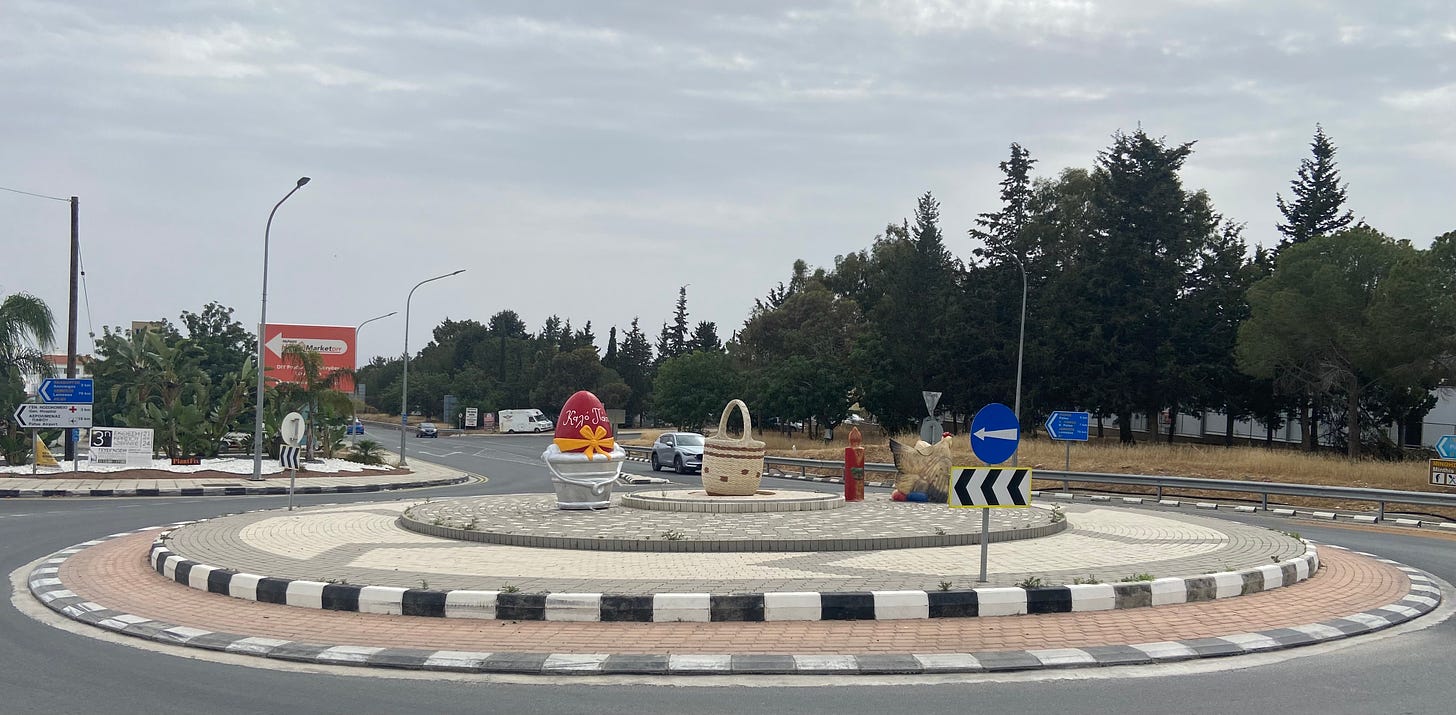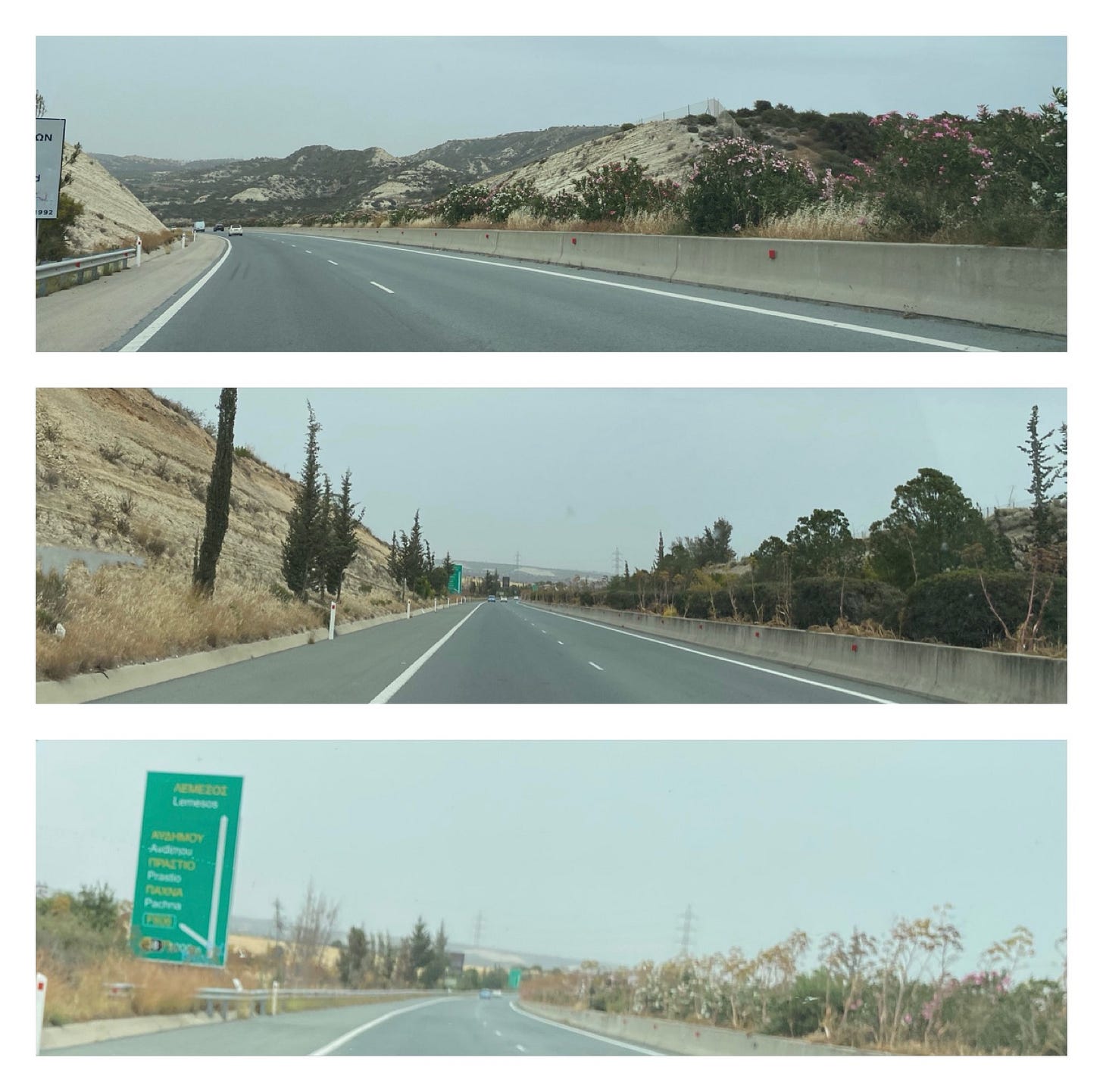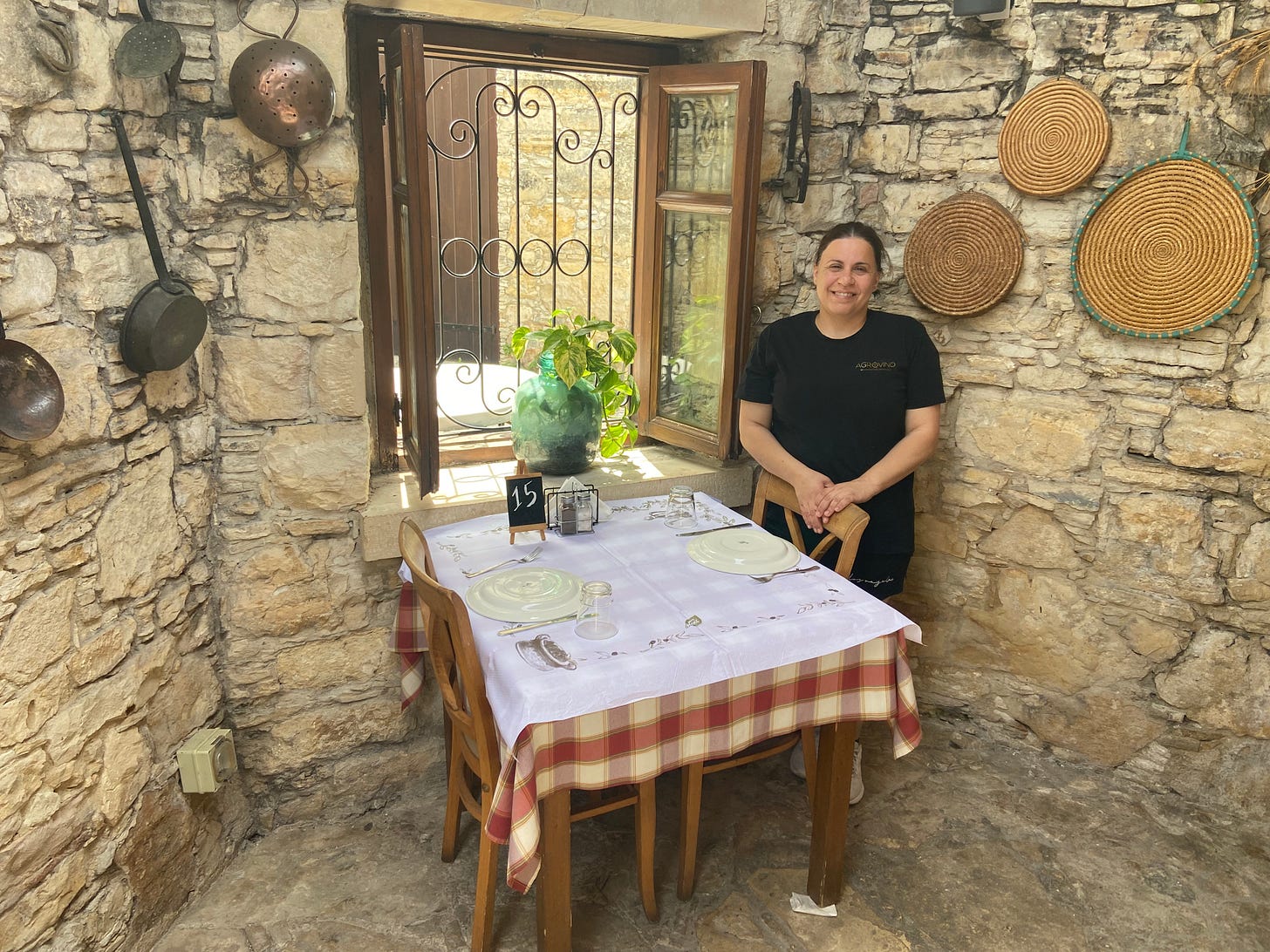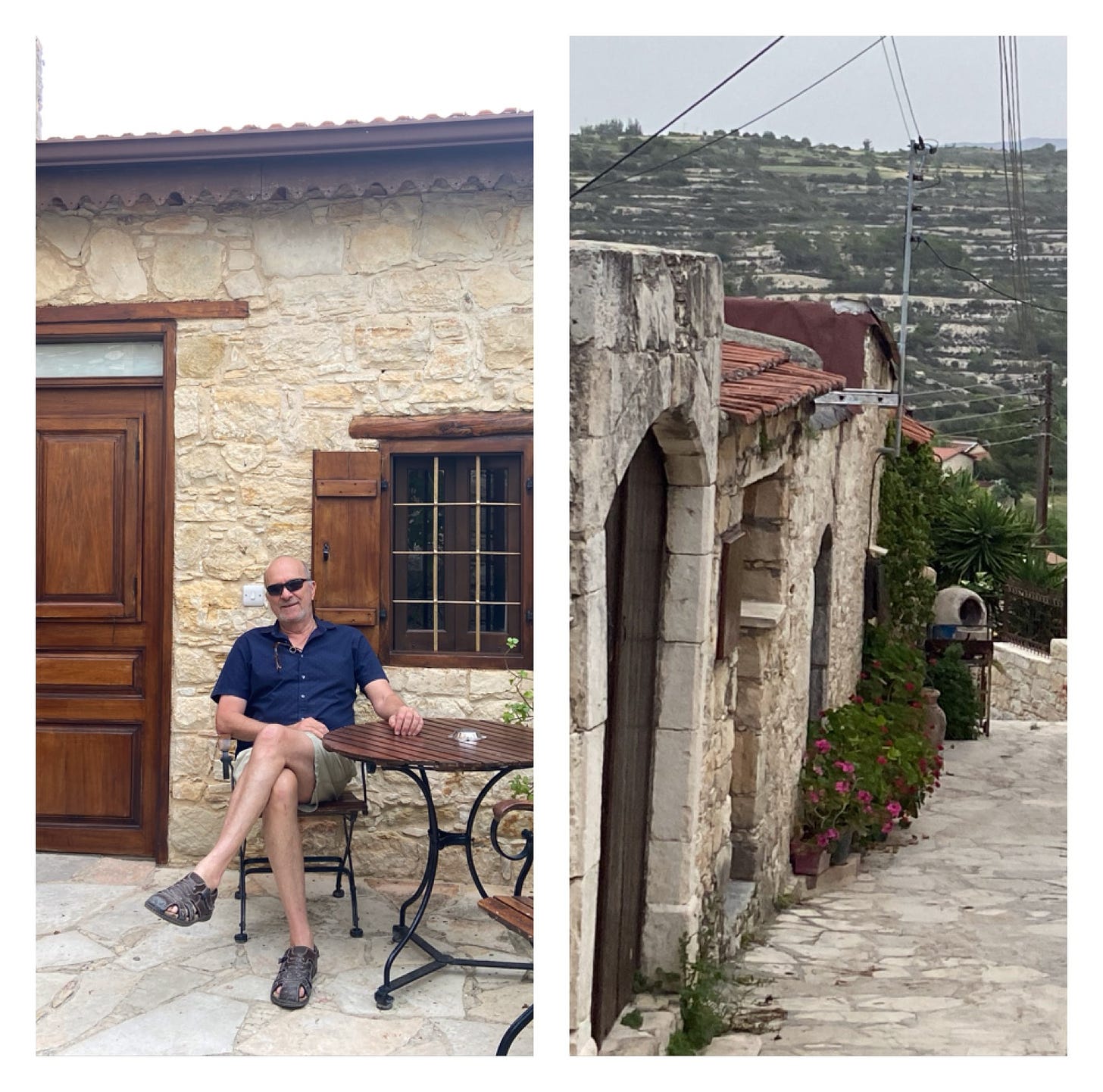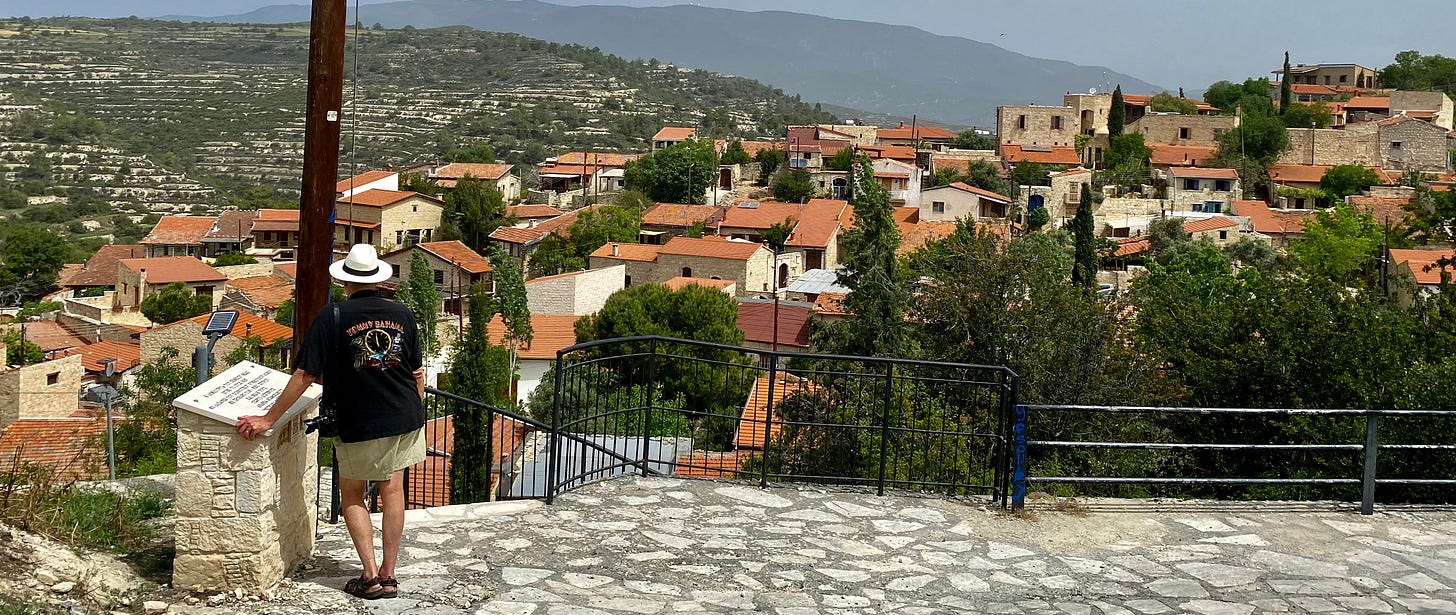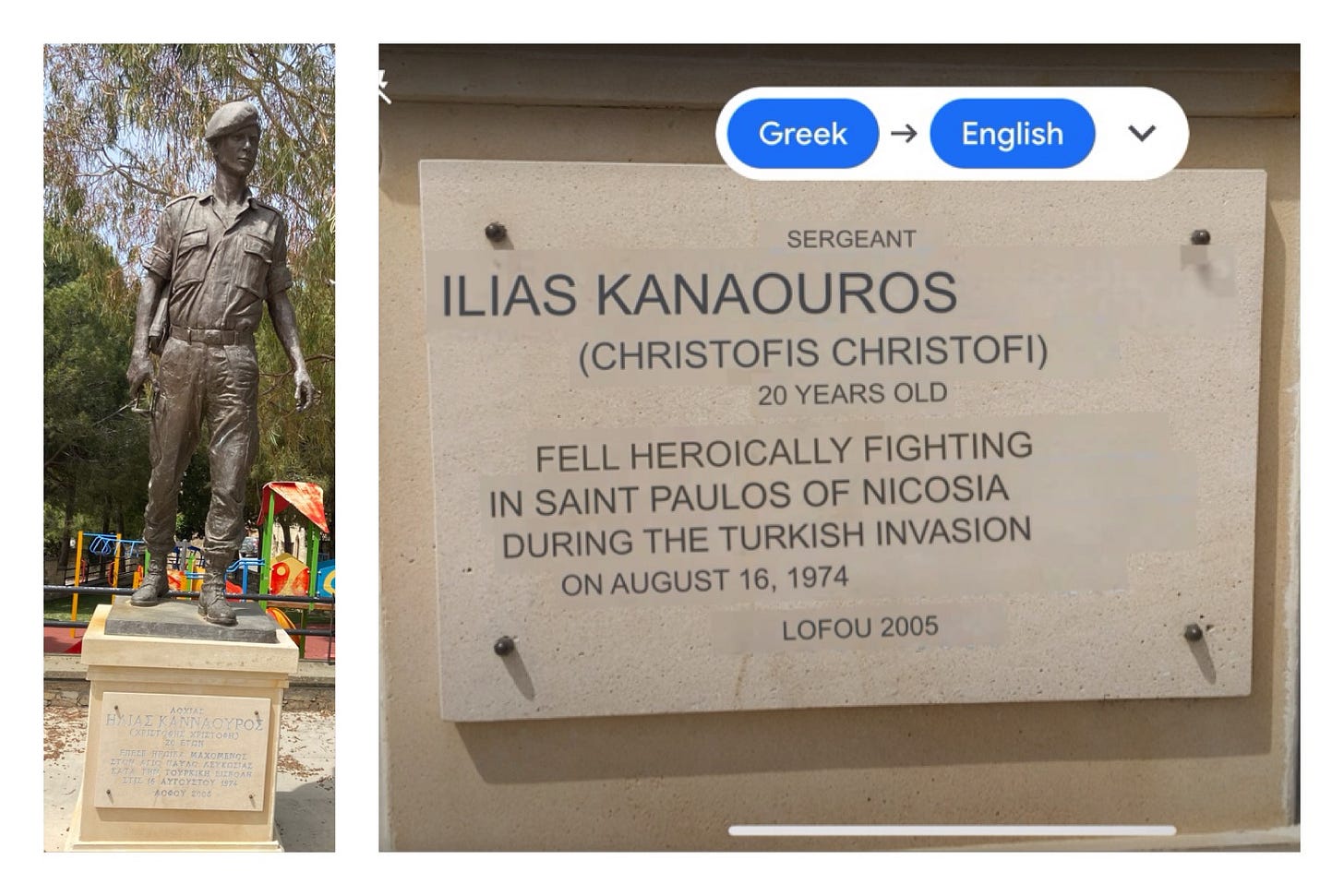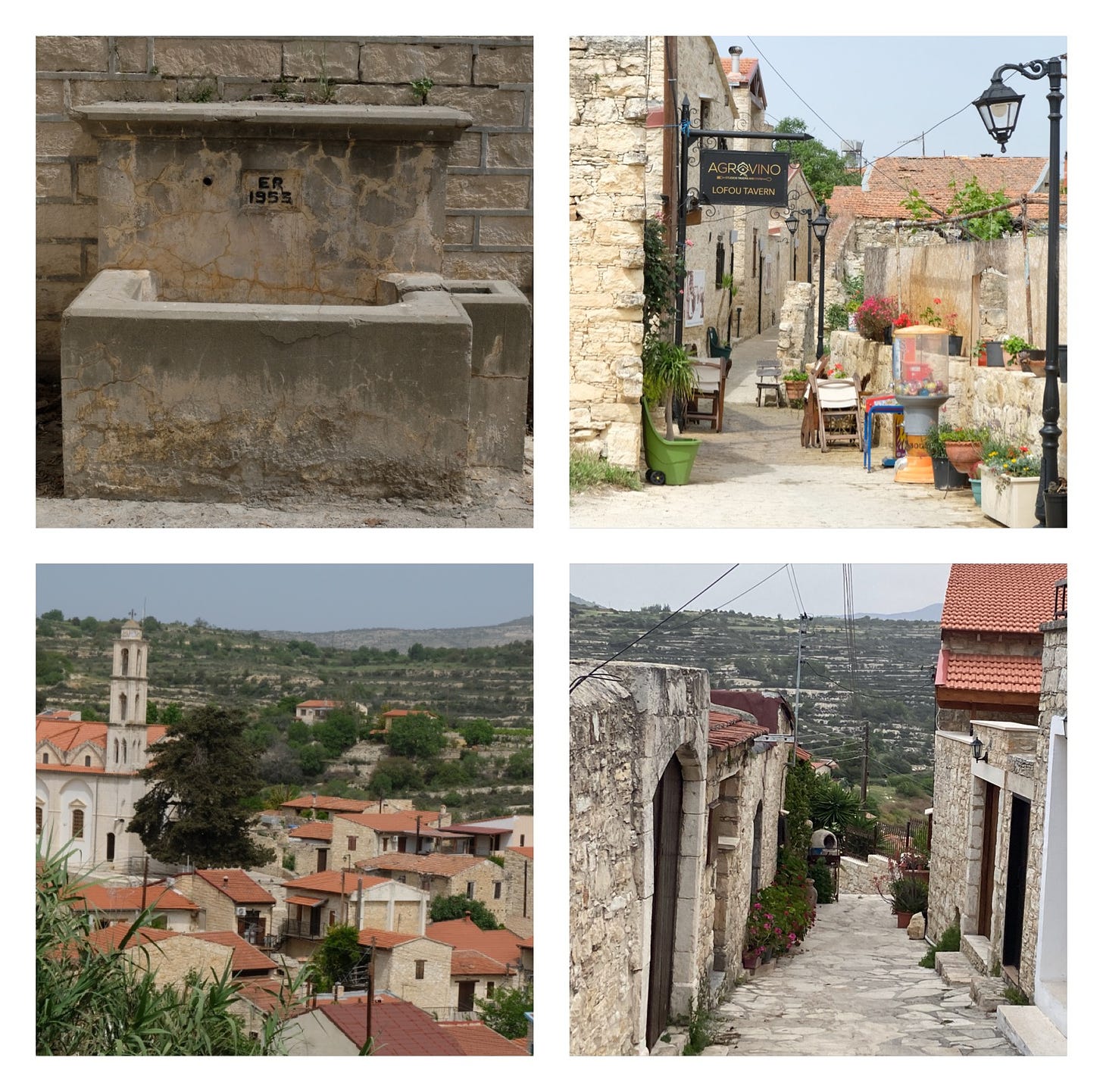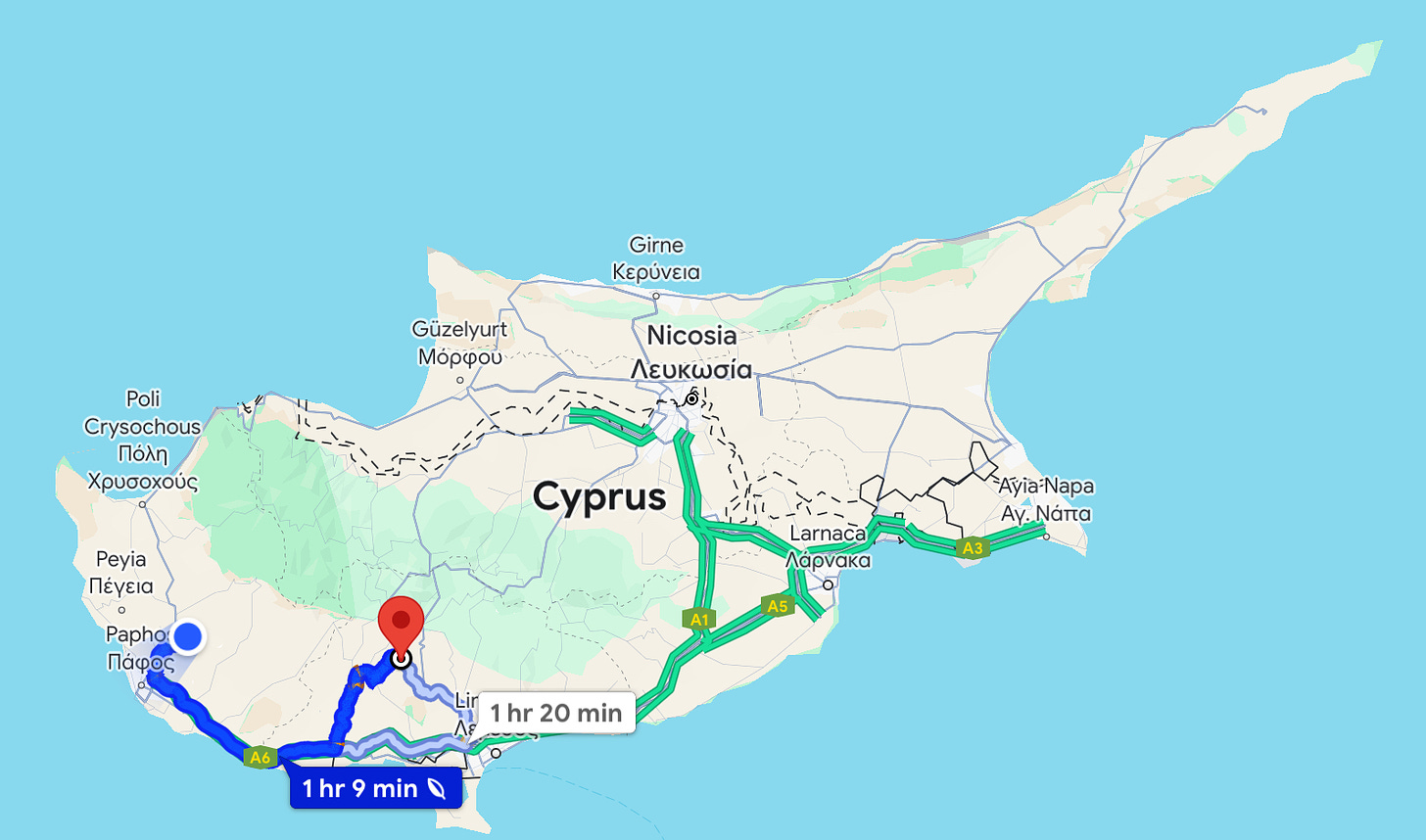Lofou (Λόφου) is a small village in the approaches to the Trodos mountain range. It’s at a height of about 800 meters (2600 ft) above sea level and about 20 km from the coast midway between Paphos and Lemesos (Limassol). The area in and around Lofou has been inhabited since the early Bronze Age. Lofou, in 2001, had a population of 10. The village, dependent on rainfall for its agriculture, was depopulated following an extensive drought, today it has a population of 100 serving a bustling tourist trade attracted to the old warm charm of the village.
A South African expatriate friend of ours, Kevin Abraham, singer, songwriter, guitarist extraordinaire accompanied by violinist Clare Hurrell, planned a performance for a musical evening at the Wine Bar in Lofou on April 25th.
We decided to take a mini vacation and spend the night in one of the beautifully appointed rooms in one of the traditional stone houses in Lofou.
The drive from Kallepia to Lofou takes about one and a quarter hours. We started by exiting the village, driving along the secondary road to Tsada and then dropping down the hill into Paphos. The first notable point is the basket roundabout (traffic circle), so named because of the basket at its center.
Taking the first exit from there we went down the hill to the next roundabout next to the International School of Paphos. One of the excellent private English medium schools found in Paphos. That’s the school in the background.
While the skies appear overcast, it’s actually the result of a sand storm generated in the Sahara Dessert blowing fine dust over Cyprus. We get one or two of those a year, generally in the spring. Our next point is the Papantoniou Bakery, a left turn followed by a right at the Paphos General Hospital brought us to the traffic circle at the entrance/exit from Paphos and on to the trans Cyprus Highway.
The A2, A3, A4, A5 and A6 motorways form a 178 km (110 miles) single four lane divided highway linking Ayia Napa on the South East with Paphos on the SouthWest corners of Cyprus. An Extension, the A7 to Polis, on the far north of the island, is currently under construction.
We drove about 20 km from Paphos before turning north off the highway to one of the small winding roads that go up into the Trodos.
At this time of the year, about 3-4 weeks after the last serious rains, the countryside is drying out and turning the yellow-brown color we expect to see for the rest of the summer in our Mediterranean climate. There are, of course, splashes of green from oleander and evergreens, as well as bright bursts of color from oleander flowers planted all along the motorway.
Once you turn off the highway, you start winding through hilly terrain and come across many villages, all with their own unique characteristics and attractions. We drove through Avdimou with its 700 year old olive tree, past Prastio with the Timios Stavros Monastery dating back to the 12th century, through the hill village of Pachna with its multiple wineries known for its August wine festival, past Therapon and the Agios Therapon Church, until finally arriving in Lofou.
After a little bit of difficulty navigating our way through Lofou’s narrow winding streets we finally found the tavern and reception for our room for the night. Cleo, the namesake of Cleo’s Inn, warmly greeted us and made sure we knew where everything was in the room.
A quick supper, a look at the lanes in the immediate area and we were off to the Agrovino Wine Bar for the evenings musical event.
It was great way to spend an evening, with friends, wine and live music in the mountains of Cyprus. The audience consisted mainly of expatriates from all over the world who live in Cyprus and a few tourists visiting the island.
The following morning we took a walk around the village.
Google Translates’ camera feature comes in handy.
Some of you may notice the letters ER with the date 1953 on the no longer used communal water fountain. It dates from the period of British rule and the ER stands for Elizabeth Regina - Elizabeth Queen.
And finally a view of the ancient, no longer farmed, stone terraces on the surrounding hills.
A drive of just over a hour from there took us back home to Kallepia.

